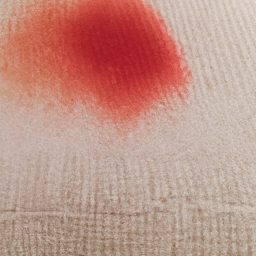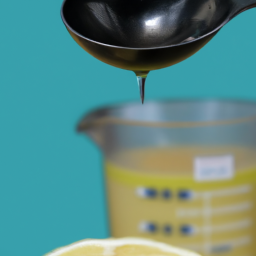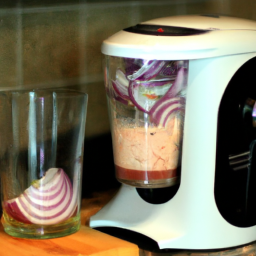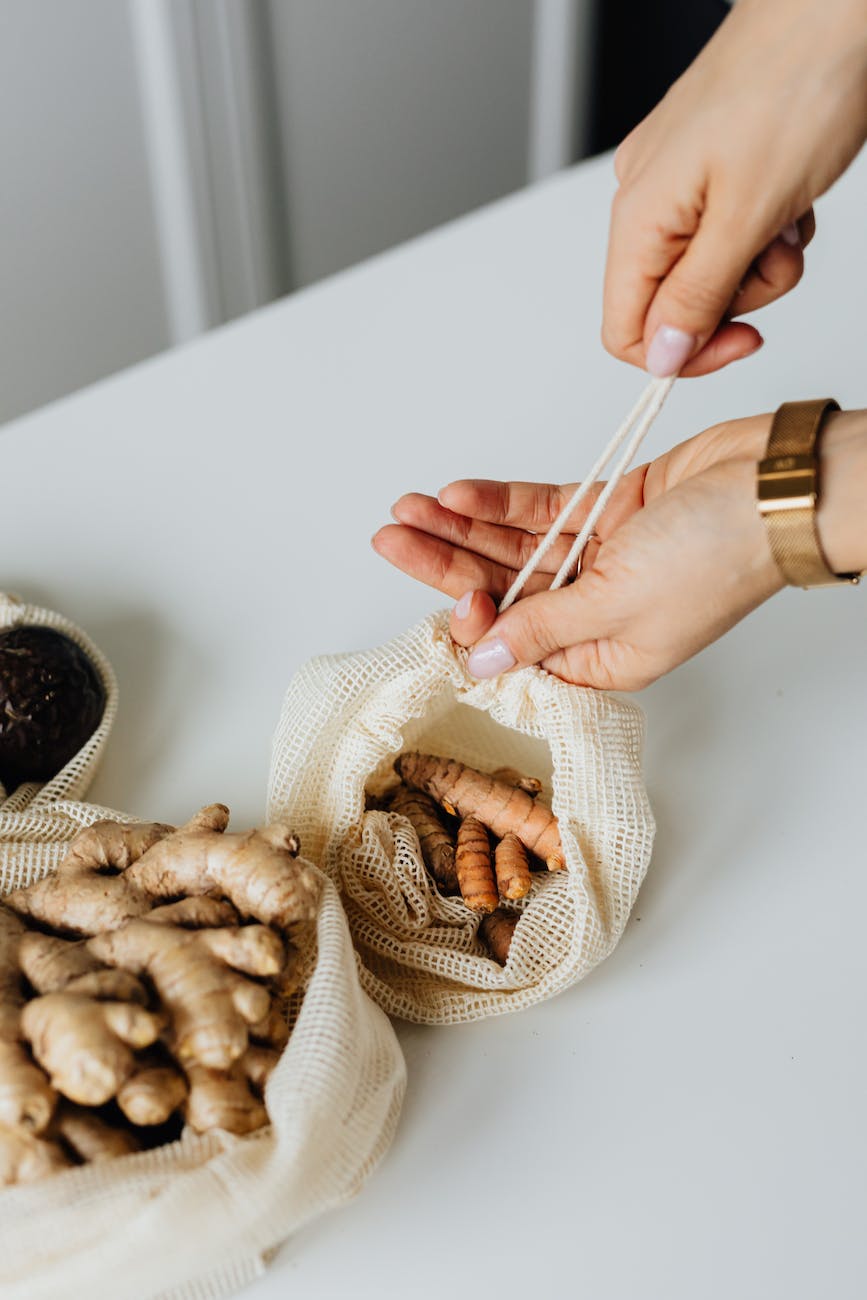For homeowners, there are few things more frustrating than spilling tomato juice on your carpet. It’s not just difficult to clean up, but it leaves behind a unsightly stain that can ruin the look of your carpet.
However, with a little bit of patience and the right tools, you can easily remove tomato juice from your carpet and restore its pristine look.
In this article, I will share with you some effective methods for removing tomato juice from your carpet. From using cold water to vinegar and baking soda, dish soap to hydrogen peroxide, enzyme cleaners to ammonia, and salt, there are many ways to tackle this stubborn stain.
So, if you’re dealing with tomato juice on your carpet, don’t panic. Follow the steps outlined in this article, and you’ll have a clean and stain-free carpet in no time.
Key Takeaways
- Act quickly to prevent the stain from becoming permanent.
- Use cold water to dilute the stain and avoid using hot water or cleaning products that may set the stain.
- Avoid rubbing the stain and instead blot it up with a clean cloth.
- Try using natural cleaners like vinegar, baking soda, and hydrogen peroxide or enzyme cleaners before resorting to harsher chemicals like ammonia.
Act Quickly
Don’t panic, but you gotta act fast to get that tomato juice out of your carpet! The longer the stain sets, the harder it is to remove.
So, the first thing to keep in mind is preventing stains from becoming permanent. Immediately grab a clean, dry cloth and blot up as much of the spill as possible. Do not rub the stain, as it’ll only push the liquid further into the carpet fibers, making it harder to remove. Blotting gently will absorb the excess moisture and prevent the stain from spreading further.
Importance of blotting can’t be stressed enough. You have to keep blotting until the cloth comes out clean. If you have a wet and dry vacuum, use the wet mode to suck up the remaining liquid.
Remember not to use hot water or any cleaning products yet, as this could set the stain instead of removing it. Now that you have blotted up as much of the stain as possible, it’s time to move on to the next step – using cold water to remove the remaining tomato juice.
Use Cold Water
Using icy water can be a chill way to tackle the stain. When it comes to tomato juice on your carpet, using cold water is a crucial step in preventing stains from setting in.
Here are a few tips to help you effectively use cold water to remove tomato juice stains:
- Start by soaking up as much of the excess tomato juice as possible with a clean cloth or paper towel.
- Gently pour cold water over the affected area to dilute the stain.
- Avoid rubbing the stain as this can spread it further into the carpet fibers. Instead, use a blotting technique to absorb the stain.
- Repeat the process until the stain is no longer visible.
Preventing stains from setting in is key when it comes to removing tomato juice from your carpet. Using cold water is a simple yet effective way to tackle the problem.
In the next section, we’ll explore another method that involves using vinegar and baking soda to remove stubborn stains.
Try Vinegar and Baking Soda
To tackle stubborn tomato juice stains on your carpet, vinegar and baking soda can be a game-changer. Not only are they effective at removing stains, but they are also natural cleaning agents that are safe to use around the house.
One of the benefits of using vinegar and baking soda for cleaning is that they are both versatile products that can be used for various purposes around the house. For instance, vinegar can be used to remove hard water stains, clean windows, and even freshen up laundry. Baking soda, on the other hand, can be used to deodorize carpets, clean kitchen appliances, and even unclog drains. When used together, vinegar and baking soda create a powerful cleaning solution that can effectively remove tough stains like tomato juice from your carpet.
Moving onto the next step, using dish soap can also be an effective way to remove tomato juice stains from your carpet.
Use Dish Soap
You’ll love how easy it is to banish those pesky tomato juice stains with just a little dish soap.
First, you’ll want to blot up as much of the liquid as possible using a clean cloth or paper towel.
Then, mix a solution of one tablespoon of dish soap with two cups of warm water.
Dip a clean cloth into the solution and gently work it into the stain, being careful not to scrub too hard and damage the carpet fibers.
Continue to blot the area with a clean, damp cloth until the stain is lifted.
Rinse the area with water and blot dry.
Prevention tips include being careful when handling tomato juice and avoiding spills altogether by keeping drinks and food away from carpeted areas.
Alternative solutions can include using a mixture of vinegar and baking soda or trying a specialized carpet cleaner.
If the stain persists, don’t worry – there are still more solutions to try.
In the next section, we’ll explore how to use hydrogen peroxide to remove tomato juice stains from carpet.
Try Hydrogen Peroxide
Hydrogen peroxide is an effective solution for removing stubborn stains, and did you know that it’s a common ingredient in many commercial stain removers? It’s a powerful and versatile cleaner that can help you tackle a variety of cleaning tasks around the house.
When it comes to getting tomato juice out of your carpet, hydrogen peroxide can be a great option because it helps to break down the stain and lift it from the fibers.
One of the main benefits of using hydrogen peroxide for cleaning is that it’s safe and non-toxic. Unlike harsh chemical cleaners, hydrogen peroxide won’t damage your carpet or harm your health. It’s also affordable and readily available at most drugstores and grocery stores.
In addition to removing stains from your carpet, hydrogen peroxide can also be used to clean and disinfect other areas of your home, such as your kitchen and bathroom. So why not give it a try and see how it works for you? If the stain persists, you can always move on to using a commercial carpet cleaner.
Use Commercial Carpet Cleaner
Previously, we talked about using hydrogen peroxide to remove tomato juice stains from carpet. However, if this method doesn’t work or you don’t have hydrogen peroxide on hand, you can try using a commercial carpet cleaner. While this option may require a bit more effort and money, it can be effective in removing even tough stains like tomato juice.
When it comes to using a commercial carpet cleaner, there are both pros and cons to consider. On the one hand, hiring professionals can save you time and effort, as they have the necessary equipment and expertise to get the job done quickly and efficiently. However, this option can be costly, especially if you have multiple stains to remove or a large carpeted area. On the other hand, if you choose to go the DIY route, there are many products on the market that can be effective in removing various types of stains, including tomato juice. These can be more affordable than hiring professionals, but may require more time and effort on your part.
When considering how to remove tomato juice stains from your carpet, it’s important to weigh the pros and cons of both hiring professionals and using DIY methods. Ultimately, the right choice will depend on your personal preferences, budget, and the severity of the stain. In the next section, we’ll explore another DIY method for removing tomato juice stains: using an enzyme cleaner.
Use Enzyme Cleaner
Using an enzyme cleaner is another effective method for banishing stubborn stains that may have lingered on your carpet for some time. Not only are enzyme cleaners environmentally friendly and safe for your family and pets, but they also work by breaking down the proteins in the tomato juice stain, making it easier to remove.
If you’re thinking of using an enzyme cleaner to get rid of tomato juice stains on your carpet, here are some benefits to consider and tips on how to choose the right one:
-
Environmentally friendly: Enzyme cleaners are made from natural ingredients that are gentle on the environment and safe for your family and pets.
-
Effective on tough stains: Enzyme cleaners work by breaking down the proteins in the stain, making it easier to remove even the toughest tomato juice stains.
-
Versatile: Enzyme cleaners can be used on a variety of materials, from carpet to upholstery to clothing.
-
Easy to use: Simply spray the enzyme cleaner on the stain, let it sit for a few minutes, and then blot it up with a clean cloth.
When choosing an enzyme cleaner, look for one that’s specifically designed for carpet stains and contains protease enzymes, which are specifically designed to break down protein stains like tomato juice.
Once you’ve removed as much of the tomato juice stain as possible with the enzyme cleaner, you can move on to the next step and try using ammonia to get rid of any remaining residue.
Try Ammonia
To effectively remove stubborn tomato juice stains from your carpet, it’s worth considering trying ammonia as an alternative cleaner. Ammonia is a strong alkaline solution that can break down proteins and work on a variety of materials like carpets, fabrics or hard surfaces.
However, before using ammonia, it’s important to understand the safety precautions to avoid any potential risks. Firstly, make sure to wear protective gloves and goggles to avoid direct contact with your skin or eyes. Secondly, never mix ammonia with other cleaning products, especially bleach as it can release harmful gases. Finally, always use ammonia in a well-ventilated area to avoid inhaling fumes.
If you’re hesitant to use ammonia, there are alternative cleaners you can try like vinegar, baking soda or hydrogen peroxide. These natural cleaners can be just as effective when used properly. For example, vinegar can neutralize the odor and help remove the stain, while baking soda can absorb the moisture and loosen the stain. Hydrogen peroxide can also be useful for removing stubborn stains, but it’s important to test it on a small, inconspicuous area first to avoid damaging your carpet.
Once you’ve chosen your cleaner, apply it to the stain and gently blot it with a clean cloth until the stain fades.
Now that you’ve tried ammonia or an alternative cleaner, the next step is to use salt to remove any remaining moisture from the carpet.
Use Salt
When faced with a tomato juice stain on my carpet, I always turn to a trusty ingredient that’s often found in my kitchen pantry: salt.
To remove the stain, I sprinkle salt directly onto the affected area and let it sit for a few hours. After that, I vacuum up the salt and repeat the process as needed until the stain is gone.
Sprinkle Salt on the Stain
First, sprinkle some salt on the tomato juice stain in your carpet. Salt is a powerful cleaning agent that can help eradicate tomato stains from your carpet with ease. Using salt has multiple benefits as a cleaning agent. Here are three tips for using salt to remove tomato juice stains from your carpet:
-
Salt absorbs moisture – When you sprinkle salt on the tomato juice stain, it immediately starts to absorb the moisture. This helps to prevent the stain from setting into the carpet fibers.
-
Salt is non-toxic – Unlike harsh chemicals, salt is a natural cleaning agent that’s safe for pets and children. You can use salt without worrying about exposing your family to harmful toxins.
-
Tips for preventing tomato stains on carpets – If you want to prevent tomato stains from occurring on your carpet in the first place, there are a few things you can do. First, avoid eating tomatoes in carpeted areas. Second, if you spill tomato juice, clean it up immediately.
After sprinkling salt on the tomato juice stain, let it sit for a few minutes. This will give the salt enough time to absorb the moisture and break down the stain.
Once you’ve let it sit, vacuum up the salt, and the stain should be gone!
Let it Sit and Then Vacuum
After sprinkling salt on the tomato juice stain, it’s important to let it sit for a while so that the salt can absorb as much of the stain as possible. The length of time you should let it sit will depend on the severity of the stain. For minor stains, 30 minutes should suffice, but for more stubborn stains, it may be necessary to let it sit for up to an hour.
Once enough time has passed, it’s time to move on to the next step. Before vacuuming up the salt, it’s important to blot the area with a clean cloth. This will help to remove any excess moisture and salt that may be left behind. Blotting is crucial because rubbing the area can cause the stain to spread and become even more difficult to remove.
Once you have blotted the area, you can then proceed to vacuum up the salt. By doing this, you will be able to remove not only the salt but also the tomato juice stain. If the stain is still visible, you can repeat the process as needed.
As you can see, the key to getting tomato juice out of carpet is to act fast and use the right techniques. By sprinkling salt, letting it sit, and then vacuuming it up while using a clean cloth to blot the area, you can effectively remove the stain without causing any damage to your carpet.
Now that we’ve covered the importance of blotting and using a clean cloth, let’s move on to the next step – repeating the process as needed.
Repeat as Needed
Now that you’ve vacuumed up the salt and blotted the area, it’s important to keep an eye on the stain and repeat the process as needed. Tomato juice can be stubborn and may require multiple attempts to fully remove the stain. This is especially true if the spill was left unattended for a long period of time before being cleaned.
To prevent future stains, it’s a good idea to clean up any spills as soon as they happen. The longer a spill sits on the carpet, the more difficult it will be to remove. Additionally, it’s important to remember that different types of spills may require different cleaning methods. For example, a grease stain will need a different approach than a juice stain.
By understanding how to properly clean different types of spills, you can prevent stains and keep your carpets looking great.
If you’ve tried multiple attempts to remove the tomato juice stain and it’s still not coming out, it may be time to call a professional carpet cleaner. They have specialized equipment and cleaning solutions that can tackle even the toughest stains.
Call a Professional
Don’t hesitate to give a professional a call for help with removing tomato juice from your carpet – they have the expertise and equipment to handle tough stains like this one.
While DIY methods can be effective, it can be risky to attempt to remove a tomato juice stain on your own. If you’re not careful, you could end up spreading the stain further or causing damage to your carpet.
When you hire a professional, you can rest easy knowing that your carpet is in good hands. They have specialized equipment and cleaning solutions that are designed to tackle even the toughest stains.
Additionally, they can provide you with valuable advice on how to prevent future spills and stains, which can save you time and money in the long run. While it may seem like an unnecessary expense, hiring a professional can actually be a smart investment that can help protect your home and keep your carpets looking like new.
Frequently Asked Questions
Can I use hot water instead of cold water to remove tomato juice stains from carpet?
Hot water can be effective in removing tomato juice stains from carpet, but be cautious as it can also set the stain. Consider alternative cleaning solutions like white vinegar and baking soda.
Is it safe to use bleach on tomato juice stains?
When dealing with tomato juice stains on carpet, it is important to consider the compatibility of the carpet material with bleach. Bleach safety also depends on proper dilution and careful application.
Will rubbing alcohol work to remove tomato juice stains from carpet?
Rubbing alcohol can be effective in removing tomato juice stains from carpet. However, vinegar can be used as an alternative. It’s important to pre-treat the stain before washing with a solution of vinegar and water.
Can I use a steam cleaner to remove tomato juice stains from carpet?
Using a steam cleaner is an effective alternative to remove tomato juice stains from carpets. However, it’s important to spot clean first and avoid using too much water. To prevent stains, blot spills immediately and treat with a mixture of vinegar and water.
What if the tomato juice stain has already dried before I noticed it, can I still remove it?
Old tomato stains are tough, but I’ve got tips. First, scrape off any dried tomato bits. Then mix dish soap and warm water. Blot with a damp cloth and repeat until the stain fades. Prevention measures include immediate cleaning and using a stain-resistant carpet.
Conclusion
In conclusion, getting tomato juice out of carpet can be a real challenge, but it’s not impossible. The key is to act quickly and use the right method for your specific situation.
If you have cold water and vinegar on hand, try those first. If those don’t work, move on to dish soap or hydrogen peroxide.
However, if you’ve tried all of these methods and the stain still won’t budge, it may be time to call in the professionals. They have access to specialized equipment and cleaning solutions that can get even the toughest stains out of your carpet.
With a little bit of luck and a lot of persistence, you can say goodbye to that pesky tomato juice stain and enjoy your clean, spotless carpet once again.
Ilana has been a vegan for over 10 years. She originally made the switch for health reasons, but soon found herself becoming more and more passionate about the ethical and environmental implications of a vegan lifestyle. Ilana is the author of The Graceful Kitchen, a blog all about veganism. She loves to cook up delicious and nutritious vegan meals, and share her recipes with others who are interested in leading a cruelty-free life. Ilana is also a strong advocate for using whole foods as the foundation of a healthy diet, and believes that going vegan is one of the best ways to achieve this.










